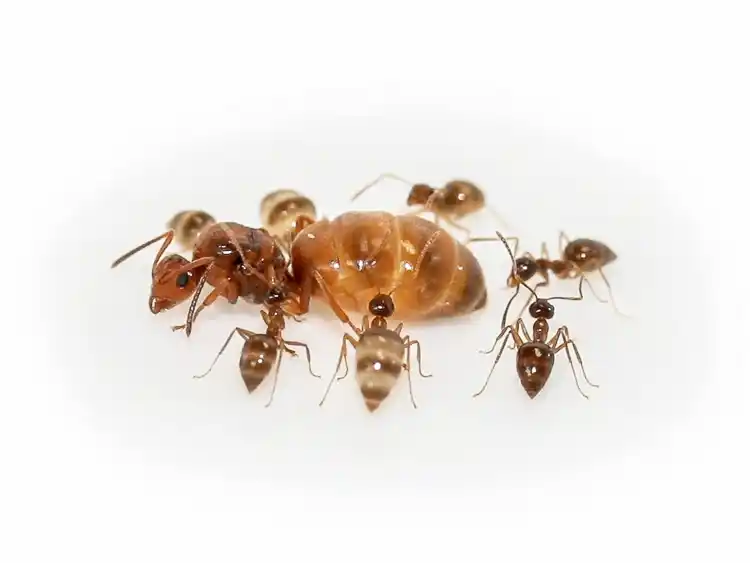Free UK Delivery on orders over £99
Prenolepis nitens European Honey Pot Ant Live Queen Ants Colony
22.99
Prenolepis Nitens, also known as the European Honey Pot Ant, is a fascinating species of ant that captivates Ant enthusiasts worldwide. These unique ants are known for their unique ability to store large amounts of honey in their bodies, making them a popular choice for those interested in ant keeping. In this section, we will explore the characteristics and behaviour of Prenolepis Nitens queens, shedding light on why they are such sought-after creatures.
Prenolepis Nitens queens are the heart and soul of their colonies. They are significantly larger than their worker counterparts, measuring up to 10mm in size. These queens have a striking appearance, with a vibrant orange or brown colouration that sets them apart from other ant species. Their bodies are designed to store honey, which enables them to provide sustenance to the rest of the colony during times of scarcity.
These queens are highly social and rely on the cooperation of their workers to survive. They establish intricate underground nests, where they lay eggs and raise their brood. The workers feed and care for the developing larvae, ensuring the growth and survival of the colony. Prenolepis Nitens queens have a lifespan of several years, during which they continue to produce eggs and expand their colonies.
How to care for Prenolepis Nitens ants
Caring for Prenolepis Nitens ants requires attention to detail and a thorough understanding of their unique needs. In this section, we will delve into the essential aspects of ant keeping, providing you with the knowledge to provide the best care for your Prenolepis Nitens colony.
First and foremost, it is crucial to set up a suitable habitat for your Prenolepis Nitens ants. A formicarium, or ant farm, with multiple chambers, is ideal for recreating their natural underground environment. Ensure that the formicarium is adequately ventilated and provides enough space for the ants to move around freely. Additionally, it is important to maintain a consistent temperature and humidity level within the formicarium to ensure the well-being of your colony.
Feeding your Prenolepis Nitens ants is a critical aspect of their care. As their name suggests, these ants have a unique ability to store honey in their bodies. Providing a reliable source of honey or sugar water is essential to their survival. It is recommended to offer a small dish or test tube filled with honey or sugar water, ensuring that it is easily accessible to the ants. Additionally, supplement their diet with small insects or protein-rich foods to provide a well-rounded nutrition.
Regular observation and maintenance of the formicarium are vital for the health of your Prenolepis Nitens ants. Keep an eye on the water levels, ensuring that there is always a fresh supply available. Remove any mould or fungi that may develop in the formicarium, as it can be harmful to the ants. Cleaning the formicarium regularly and removing any debris or waste will help maintain a clean and hygienic environment for your ants.
Common challenges in Prenolepis Nitens Ant Keeping.
While keeping Prenolepis Nitens ants can be a rewarding experience, it is not without its challenges. In this section, we will discuss some common hurdles that ant keepers may face when caring for Prenolepis Nitens colonies, providing tips and solutions to overcome these obstacles.
One common challenge in Prenolepis Nitens ant keeping is maintaining the optimal temperature and humidity levels within the formicarium. These ants thrive in warm and humid conditions, and any fluctuations can have detrimental effects on their health. Investing in a reliable temperature and humidity control system, such as a heat mat and a humidifier, can help create a stable environment for your ants.
Another challenge is preventing the growth of mould and fungi in the formicarium. These can be harmful to the ants and compromise the overall health of the colony. Regularly inspect the formicarium for any signs of mould or fungi, and promptly remove them using a mild disinfectant or by replacing affected materials.
Additionally, Prenolepis Nitens ants are known for their aggressive nature towards other ant species. If you plan to keep multiple ant colonies, it is crucial to ensure that they are compatible and can coexist peacefully. Introducing ants from different species should be done with caution, and close monitoring is necessary to prevent any conflicts or harm to the ants.

